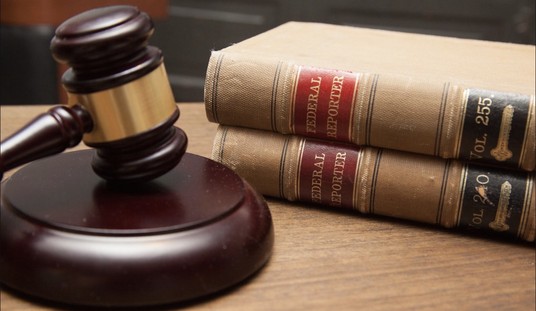“A well regulated militia being necessary to the security of a free state, the people’s right to keep and bear arms shall not be infringed.”
I think I speak for all of us when I say that I really wish the Founding Fathers had omitted that opening clause in the Second Amendment.
After all, we know from their own writings after the ratification of the Bill of Rights that yes, the Second Amendment was meant to apply to an individual right to keep and bear arms, not a state right, but many have taken that clause as if it’s the most relevant part of the entire thing.
When writing the Heller decision, Justice Antonin Scalia made quite a bit of his argument revolve around the grammar of the Second Amendment.
More than a decade after that decision, we now have someone trying to debunk that argument.
In traditional grammar, a clause requires a subject and a predicate, a fact that was instilled in me by the Sisters of St. Joseph of Carondelet starting in the sixth grade. Of the six justices who attended a Catholic elementary or high school, not one has offered a correct grammatical reading of the amendment. Surely some must have spent as many hours as I did at the chalkboard, diagramming sentences into nouns, verbs, participial phrases, direct and indirect objects, dependent clauses, adverbial modifiers, and other parts of speech. I can picture Justice Scalia trying to wriggle his way out as Sister Kathleen Mary admonishes him for fabricating his own grammatical rules.
…
While diagramming sentences has grown less fashionable in literacy education, it remains an effective tool for revealing how a sentence’s construction determines its meaning. Let’s look at a diagram of the Second Amendment.
The top line of the diagram illustrates that the first part of the sentence is not a grammatical clause because the subject (militia) isn’t followed by a predicate. It’s modified by a participial phrase. Looking past this grammatical distinction was the initial mistake in a string of grammatical falsehoods that distort the sentence’s meaning while failing what might be a sixth-grade grammar test. Rather than saying anything about the positive right to bear arms, the linkage only specifies a condition under which the right may not be infringed.
The first part of the sentence is a form borrowed from Latin called an ablative absolute. In Latin, this grammatical construction is widely used to define the time or cause for an action. It’s linked in meaning to the rest of the sentence but is otherwise grammatically independent or free-floating. A translated example of such a Latin sentence might be: “The enemy being exposed, Caesar led the charge.”
The diagrammed sentence looks like two separate statements, but the first gives the reason or moment for Caesar’s charge. It’s called absolute (absolūtum, free or separate) because it stands apart from the rest of the sentence. But it expresses the cause or occasion for the main action of the sentence, why or when Caesar led the charge.
What the author doesn’t comment on, however, is fairly telling.
For example, in both of those examples, if you remove the introductory clause, the sentence still makes sense. It’s a complete sentence. Remove everything after the comma and you have a sentence fragment.
That clause may provide some context, but it doesn’t actually change the meaning of the sentence in and of itself.
In his second example, “The enemy being exposed,” is nice context, but does it really change the fact that Ceaser led the charge? Not really.
Now, his grammatical arguments get a little esoteric, in my opinion, and I think that’s by design. After all, if people can barely understand what he’s saying, few can debunk his claims. Frankly, I don’t see how his claims about grammar actually change the underlying meaning of the Second Amendment.
In fact, one of the key points is the phrase “shall not be infringed.”
Here is what the author had to say about it.
Here’s where he makes a grammatical error in how the two parts of the sentence are linked. The grammar of the sentence doesn’t announce a purpose for the right to bear arms. It announces when and why the right shall not be infringed. The diagrams above show that absolute constructions never modify the subject of the sentence but always the predicate. The Second Amendment doesn’t say we can’t own guns to go hunting or maybe even to defend ourselves when necessary, but the right for such purposes can be infringed, as already happens with the constriction of times of year and kinds of guns we can own to shoot elk. The Second Amendment uses the absolute construction borrowed from Latin to give us the reason and occasion for the main command of the sentence—when and why the right to keep and bear arms for a well-regulated militia shall not be infringed.
I don’t actually disagree with this to any significant degree. The right to keep and bear arms shall not be infringed in order to maintain a well-regulated militia.
For the author, though, that seems to be a kill shot. He’s absolutely convinced, or so it seems, that this invalidates the pro-gun argument entirely.
It does not.
Oh, it might if we bought into the whole “the National Guard is the militia of today” argument, but while the National Guard is a spiritual descendant of it in many ways, it didn’t completely supplant the militia as our Founding Fathers knew it. The unorganized militia is still a thing and part of mobilization plans here in the US. It’s not the first part of mobilization, but it’s still on the books.
As such, there’s no difference between then and now.
The author thinks he has a gotcha here, but it’s not the win he thinks he has. At the end of the day, he put a lot of words up at the LA Review of Book to say absolutely nothing of any value, contributing nothing to the conversation around the Second Amendment.
Instead, it’s a flex in the nerdiest way humanly possible, and as something of a nerd myself, I’m unimpressed.








